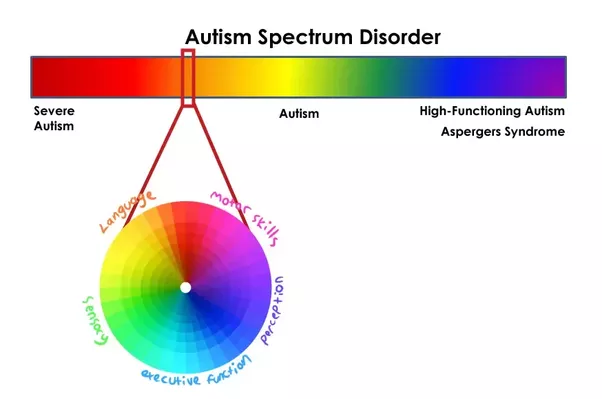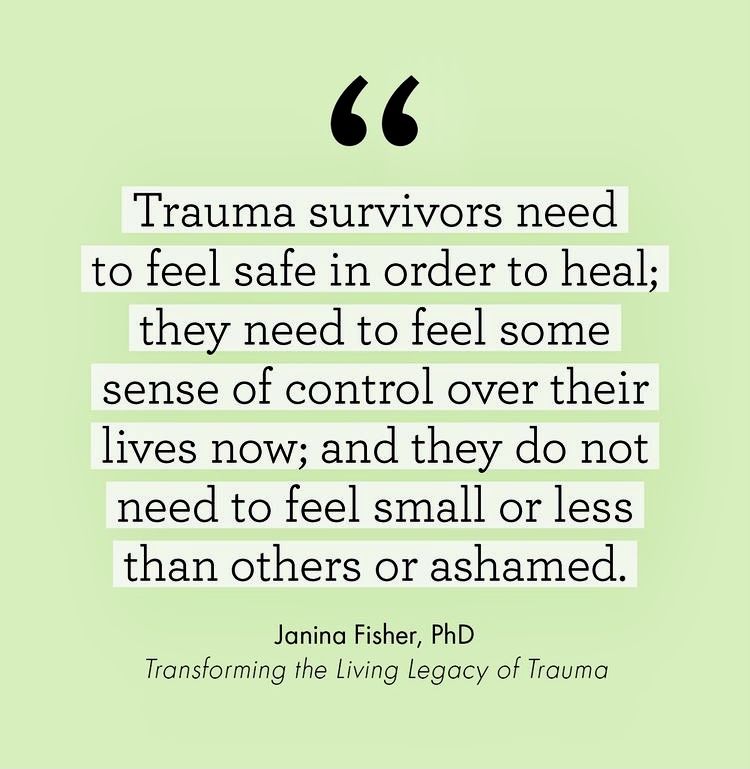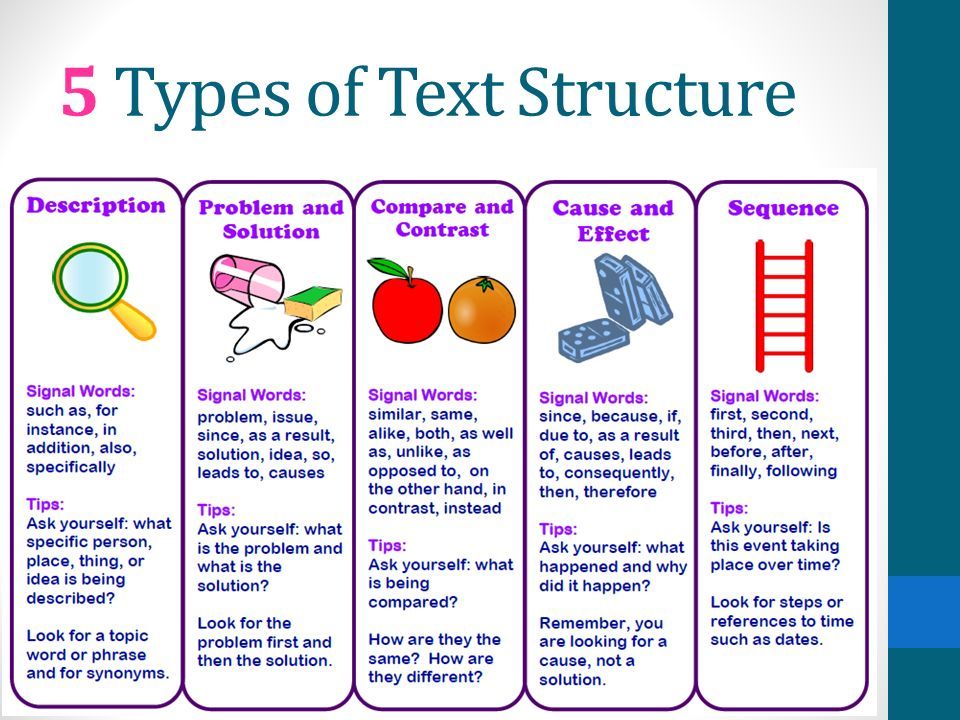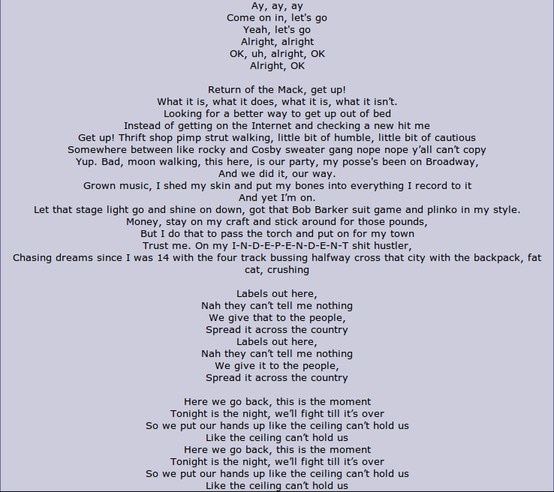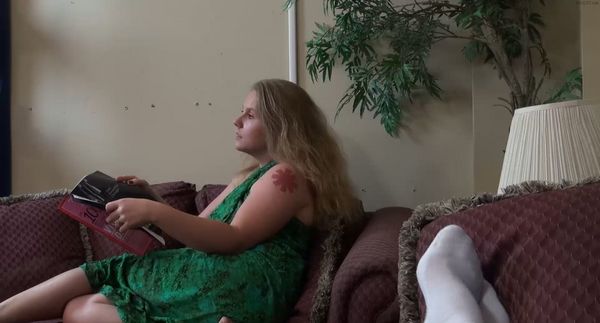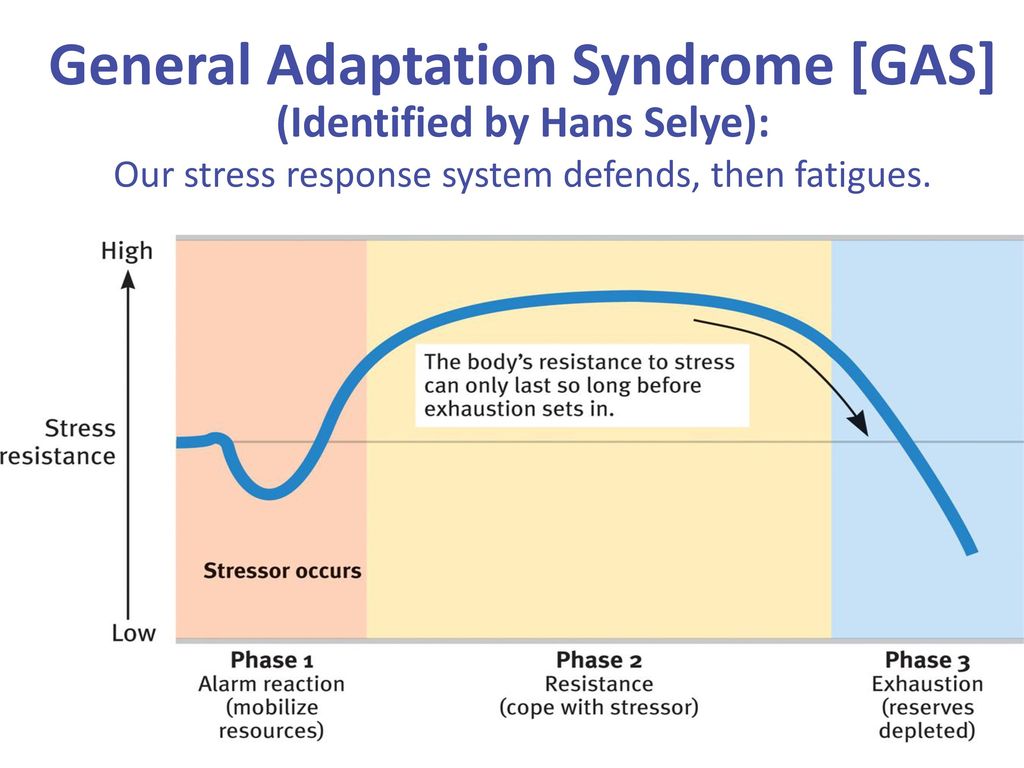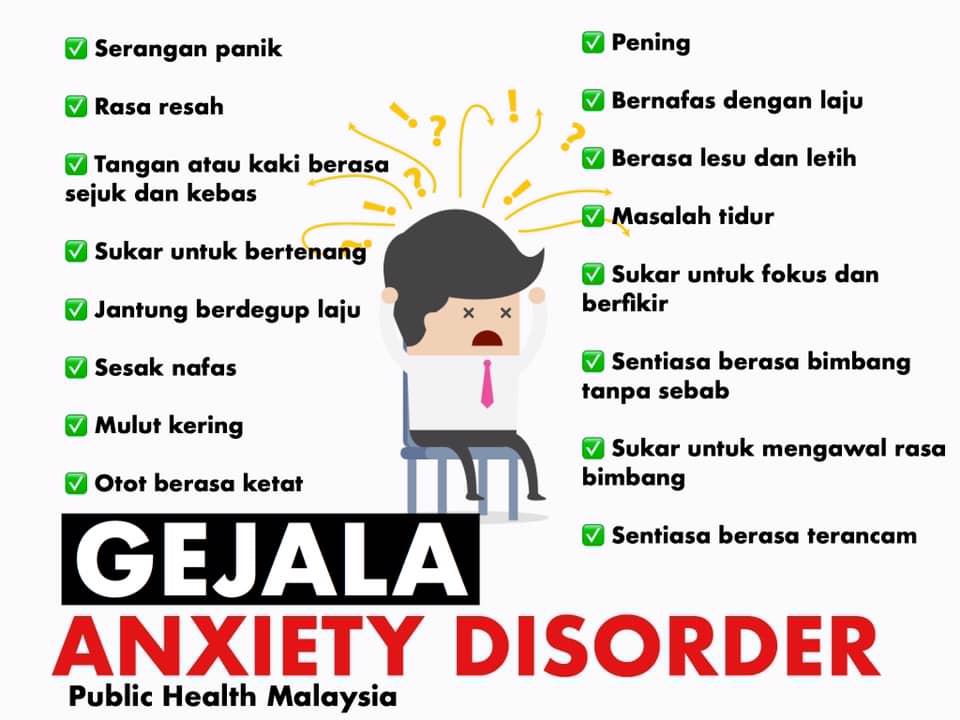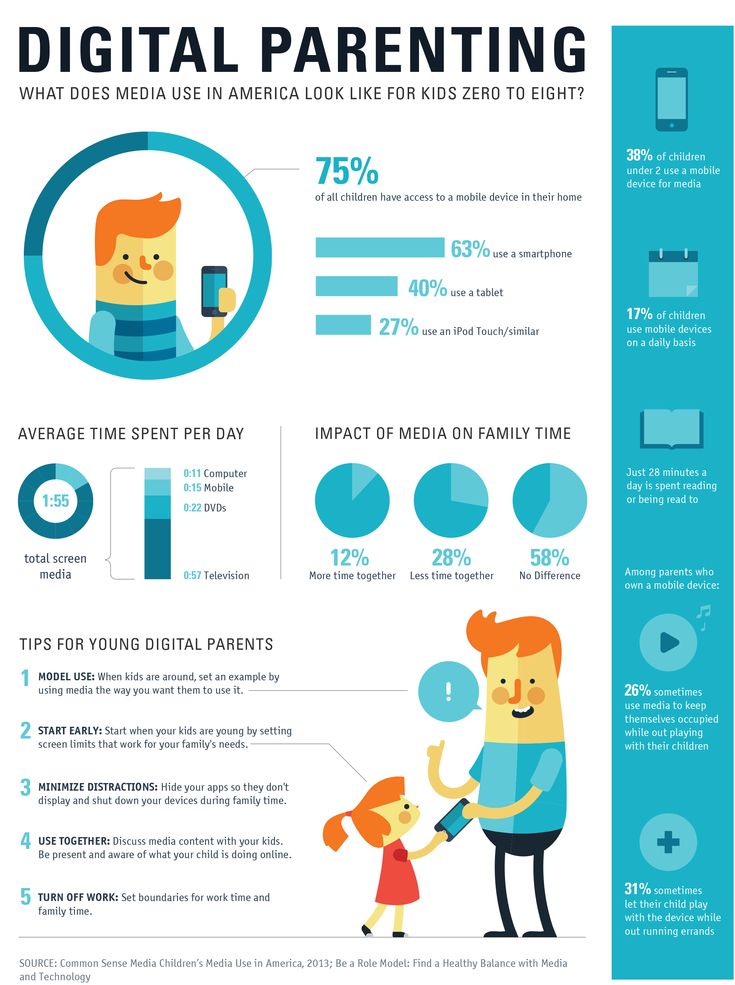Autism spectrum test teenager
Free Online Autism Quiz for Teens (12 to 15 years old)
Does my teen have autism? How to know if a 12-15 years old teenager has autism? If you suspect that your adolescent has signs of autism, you can take our free online autism quiz to find out.
Contents
Autism Signs in Teens
Autism Spectrum Disorder is a vast spectrum, which has high-functioning and low-functioning levels. While children on the lower levels of function are easier to diagnose, children on the higher levels tend to make it through a lot of their life without ever getting a diagnosis. This is because high functioning people can be independent and learn behavioral, social, and communicative skills better. They may be able to fit in without any oddities in their behaviors being pointed out.
However, a time where the differences may come out is when they are 12-15 years old adolescents, going through one of the most difficult times in their lives. Fitting in and a sense of belonging is vital in these critical years, and if your teen has undiagnosed Autism Spectrum Disorder, they may become frustrated when they can’t understand why they’re different.
There are some noticeable autism signs you can keep an eye out for, but remember, your teenager doesn’t have to experience every single one of these signs to be autistic. It’s a spectrum, and everyone’s level varies.
When it comes to the social and communicative construct, autistic teenagers might focus on only one topic in their life and have trouble negotiating their stance or position on something. They may not give others turns or be overly strict in following rules. Some teenagers with autism have a hard time reading emotions or sarcasm and avoid eye contact. If they find social interaction too overwhelming, they may even prefer being on their own.
In the behavioral field, autistic teenagers’ routines and habits might be extremely repetitive, or they prefer everything to be in a strict, orderly fashion. Teenagers with autism may be picky about textures in food, bedding, and clothing, or they may wear inappropriate clothing according to the weather (a sweater in summer, shorts in the winter.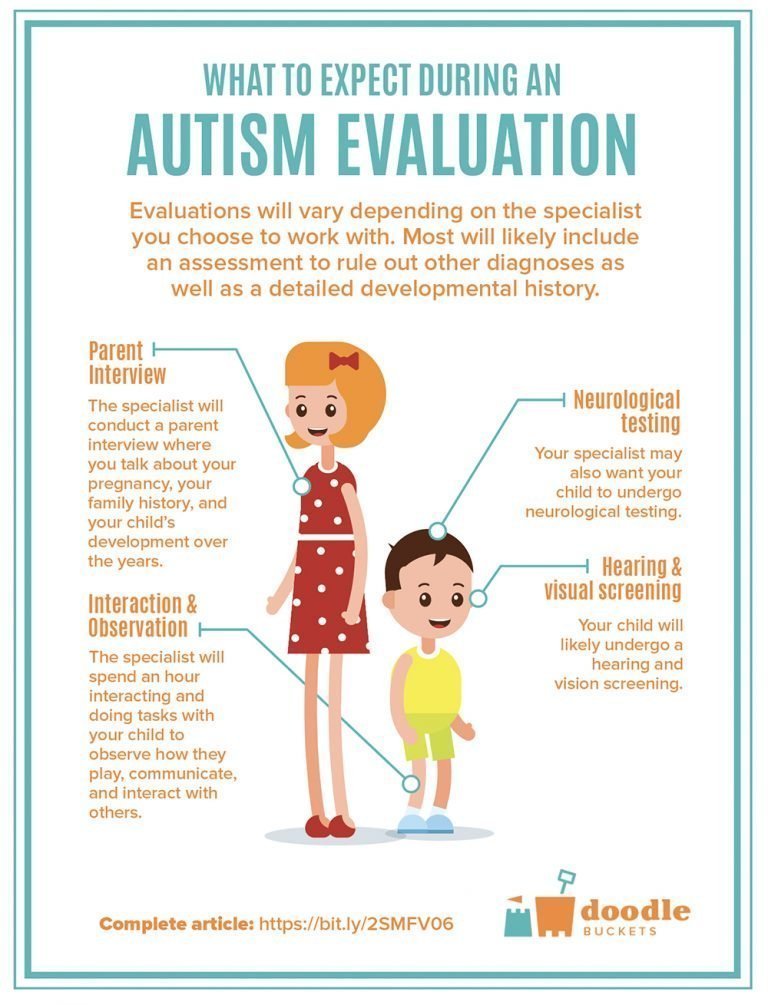 ) Autistic teens could be accustomed to making irregular movements or noises without realizing it.
) Autistic teens could be accustomed to making irregular movements or noises without realizing it.
What to Expect from our Autism Quiz for Teens
The below quiz is a simplified test of autism behaviors for teens in the age group of 12 to 15 years old. This teen autism test is in no way a professional diagnosis, simply an indication of whether you should book a consultation or not for professional opinions. These are all possible signs you can detect in your 12-15 years old teenager, though they might not have all of these. If you want a professional diagnosis for your teen, then you’ll have to visit psychologists or psychiatrists.
Take Autism Quiz for Teens (12 to 15 years old)
Your child sees patterns in everything. (grass, wallpaper, carpeting, clouds)
My child can make patterns out of everything.
My child can sometimes make patterns out of designs.
My child doesn’t make patterns out of everything.
Your child focuses on the bigger picture rather than the smaller details.
My child tends to hyper fixate on the smaller details and can’t see the bigger picture.
My child assesses the smaller details before they look at the bigger picture.
My child can see the bigger picture without focusing on the smaller details.
When in a group, your child can keep up with several conversations at a time.
My child has a hard time maintaining a one-on-one conversation.
My child can keep one or two conversations going, but no more.
My child can keep up with several conversations in a group.
Your child can resume work or activity after being interrupted.
My child cannot resume an activity that’s been interrupted halfway.
My child has a hard time getting back to an activity that’s been interrupted.
My child can regain their track and flow when continuing an activity that was interrupted.
Your child is comfortable with keeping a conversation going.
My child’s conversations are typically short and awkward.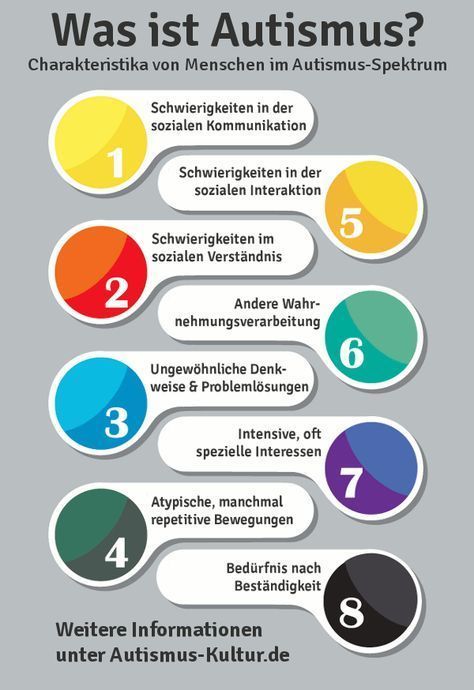
My child’s conversations are direct and don’t linger for long.
My child knows how to extend the conversation from one topic to another.
Your child is good with light conversation.
My child prefers to keep to themselves and doesn’t talk much.
My child only talks about their needs or when asked to.
My child knows how to start and keep up light conversations.
Your child played imaginary/pretend games with friends when they were younger.
My child played alone when they were younger and didn’t use their imagination.
My child used their imagination in games when playing alone, but not with other kids.
My child used their imagination to play alone and with other kids.
Your child can imagine what it would be like to be a different person.
My child isn’t capable of imagining what it would be like to be a different person.
My child has a hard time imagining being different or someone else.
My child can imagine what it would be like to be someone else.
Your child is comfortable in highly social situations (gathering, parties, public places)
My child is not comfortable in highly social places where interaction is mandatory.
My child has a hard time being around new people in highly social situations.
My child enjoys social situations where there are new and acquainted people.
Your child finds it easy to make new friends.
My child finds it hard to make new friends and would rather be alone.
My child has a hard time making new friends and only has one or two at a time.
My child enjoys making new friends.
Autism Quizzes:
- Autism Quiz for Toddlers (1 to 3 years old)
- Autism Quiz for Preschoolers & Children (4 to 11 years old)
- Autism Quiz for Teens (12 to 15 years old)
References:
- Signs of autism in older children and teenagers
- What Are the Signs of Autism in Teenagers?
- Autism first signs and checklist for teenagers
- Autism Spectrum Quotient (Adolescent)
Last Updated on October 6, 2021
Autism Quiz: Do I Have Autism?
Autism Quiz: Do I Have Autism? | Psych Central- Conditions
- Featured
- Addictions
- Anxiety Disorder
- ADHD
- Bipolar Disorder
- Depression
- PTSD
- Schizophrenia
- Articles
- Adjustment Disorder
- Agoraphobia
- Borderline Personality Disorder
- Childhood ADHD
- Dissociative Identity Disorder
- Narcissistic Personality Disorder
- Narcolepsy
- Oppositional Defiant Disorder
- Panic Attack
- Postpartum Depression
- Schizoaffective Disorder
- Seasonal Affective Disorder
- Sex Addiction
- Specific Phobias
- Teenage Depression
- Trauma
- Featured
- Discover
- Wellness Topics
- Black Mental Health
- Grief
- Emotional Health
- Sex & Relationships
- Trauma
- Understanding Therapy
- Workplace Mental Health
- Original Series
- My Life with OCD
- Caregivers Chronicles
- Empathy at Work
- Sex, Love & All of the Above
- Parent Central
- Mindful Moment
- News & Events
- Mental Health News
- COVID-19
- Live Town Hall: Mental Health in Focus
- Podcasts
- Inside Mental Health
- Inside Schizophrenia
- Inside Bipolar
- Wellness Topics
- Quizzes
- Conditions
- ADHD Symptoms Quiz
- Anxiety Symptoms Quiz
- Autism Quiz: Family & Friends
- Autism Symptoms Quiz
- Bipolar Disorder Quiz
- Borderline Personality Test
- Childhood ADHD Quiz
- Depression Symptoms Quiz
- Eating Disorder Quiz
- Narcissim Symptoms Test
- OCD Symptoms Quiz
- Psychopathy Test
- PTSD Symptoms Quiz
- Schizophrenia Quiz
- Lifestyle
- Attachment Style Quiz
- Career Test
- Do I Need Therapy Quiz?
- Domestic Violence Screening Quiz
- Emotional Type Quiz
- Loneliness Quiz
- Parenting Style Quiz
- Personality Test
- Relationship Quiz
- Stress Test
- What's Your Sleep Like?
- Conditions
- Resources
- Treatment & Support
- Find Support
- Suicide Prevention
- Drugs & Medications
- Find a Therapist
- Treatment & Support
Medically reviewed by Jeffrey Ditzell, DO — By Christina Ward — Updated on Apr 12, 2021
Autism spectrum disorder (ASD) is a neurodevelopmental disorder that affects the way a person thinks, behaves, and communicates.
While children are typically screened for autism symptoms as early as 18 months, it can be diagnosed later in older children, adolescents, and even adults.
This brief, time-saving test is designed for anyone who thinks they might benefit from an autism screening or evaluation.
The items below will help you determine whether you may need an in-depth evaluation including screening tools, parental or family insight, and clinical observations.
A mental health professional can also help figure out if your symptoms might be a sign of another mental health condition and recommend treatment if needed.
This online screening is not a definitive tool. It will not conclusively guarantee that you have autism.
However, it will measure if you have any autism-related traits, based on your own self-assessment.
Only a trained medical professional, such as a doctor or mental health professional, can help you determine the next best steps for you.
This free autism quiz was adapted from the Autism Spectrum Screening Questionnaire (ASSQ) designed to screen for the possibility of autism spectrum disorder (ASD). This is not a diagnostic tool and should be considered for personal use only. An accurate diagnosis can be made only through a clinical evaluation. If you think you might have ASD, consider speaking with a primary care doctor, psychiatrist or another mental health professional. They can perform a clinical evaluation that includes screening tools, parental or family insight, and clinical observations to arrive at the most accurate diagnosis.
This is not a diagnostic tool and should be considered for personal use only. An accurate diagnosis can be made only through a clinical evaluation. If you think you might have ASD, consider speaking with a primary care doctor, psychiatrist or another mental health professional. They can perform a clinical evaluation that includes screening tools, parental or family insight, and clinical observations to arrive at the most accurate diagnosis.
Instructions
The items below refer to your preferences and behaviors over the course of your life. For the results of this quiz to be most accurate, try to be as honest as possible in your responses.
This online screening is not a diagnostic tool. Only a trained medical professional, like a doctor or mental health professional, can help you determine the next best steps for you.
Ready to start therapy? Our Find a Therapist resource may help.
Last medically reviewed on April 11, 2021
5 sourcescollapsed
- Baron-Cohen B, et al.
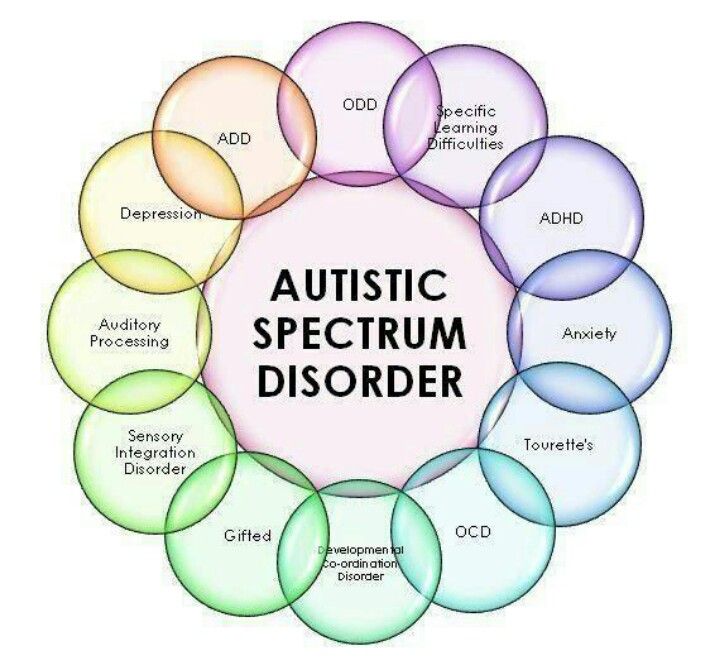 (2001). The autism-spectrum quotient (AQ): Evidence from Asperger syndrome/high-functioning autism, males and females, scientists and mathematicians.
(2001). The autism-spectrum quotient (AQ): Evidence from Asperger syndrome/high-functioning autism, males and females, scientists and mathematicians.
link.springer.com/article/10.1023%2FA%3A1005653411471 - Barrett SL, et al. (2015). The adult repetitive behaviours questionnaire-2 (RBQ-2A): A self-report measure of restricted and repetitive behaviours.
ncbi.nlm.nih.gov/pmc/articles/PMC4608982/ - Dell'Osso L, et al. (2017). Adult autism subthreshold spectrum (AdAS Spectrum): Validation of a questionnaire investigating subthreshold autism spectrum.
sciencedirect.com/science/article/abs/pii/S0010440X1630339X?via%3Dihub - Erikkson JM, et al. (2013). RAADS-14 Screen: Validity of a screening tool for autism spectrum disorder in an adult psychiatric population.
molecularautism.biomedcentral.com/articles/10.1186/2040-2392-4-49 - Woodbury-Smith MR, et al. (2005). Screening adults for Asperger Syndrome using the AQ: A preliminary study of its diagnostic validity in clinical practice.
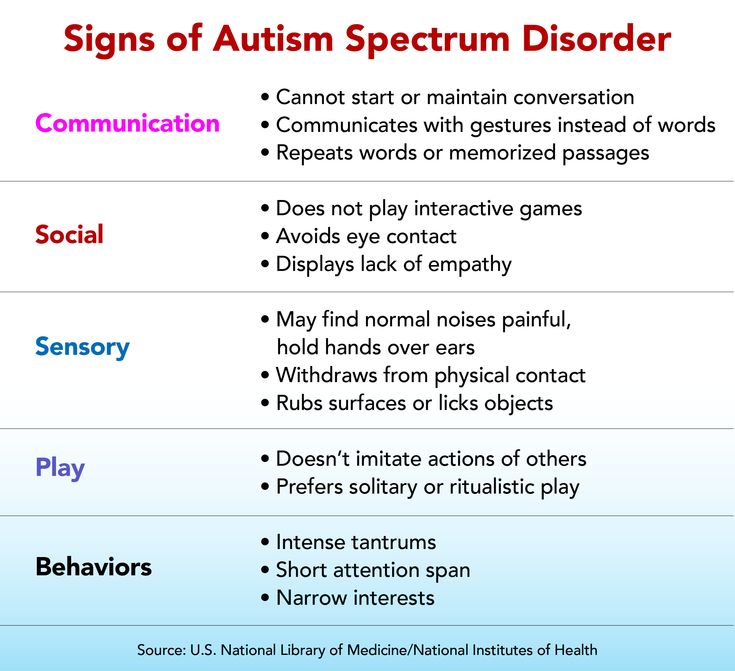
link.springer.com/article/10.1007/s10803-005-3300-7
FEEDBACK:
Medically reviewed by Jeffrey Ditzell, DO — By Christina Ward — Updated on Apr 12, 2021
RELATED
What Are the Symptoms of Autism Spectrum Disorder?
What Disorders Are Related to Autism?
Growing Up Autistic: How Do I Make the Leap to Adulthood?
Asperger’s vs. Autism: What Exactly Is the Difference?
How Is Autism Diagnosed?
Read this next
What Are the Symptoms of Autism Spectrum Disorder?
Medically reviewed by Timothy J. Legg, PhD, PsyD, CRNP, ACRN, CPH
Autism symptoms are actually differences in sensory, communication, and behavior patterns. Here's why.
READ MORE
What Disorders Are Related to Autism?
Medically reviewed by Nathan Greene, PsyD
If you're autistic, it's fairly common to also live with another medical, neurodevelopmental, or genetic condition.
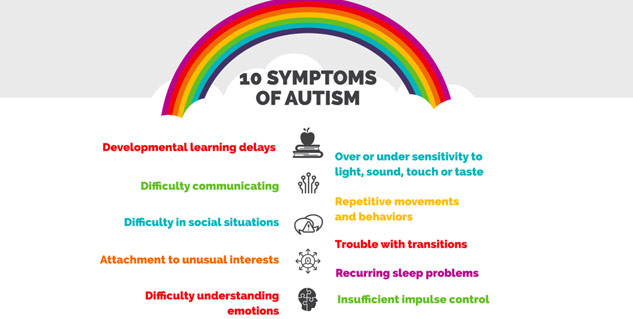 Learn about autism-related…
Learn about autism-related…READ MORE
Growing Up Autistic: How Do I Make the Leap to Adulthood?
Medically reviewed by Jeffrey Ditzell, DO
Each autistic adult is different. Learn how you can manage school, work, and more with whichever level of support works best for you.
READ MORE
Asperger’s vs. Autism: What Exactly Is the Difference?
Medically reviewed by Akilah Reynolds, PhD
Asperger's syndrome and autism (ASD) are different diagnoses, but if you've guessed that there's a lot of overlap, you're also right. You can learn…
READ MORE
How Is Autism Diagnosed?
Medically reviewed by Alexander Klein, PsyD
Autism is diagnosed based on shared behaviors and ways of communicating. But with that said, every person with autism is different.
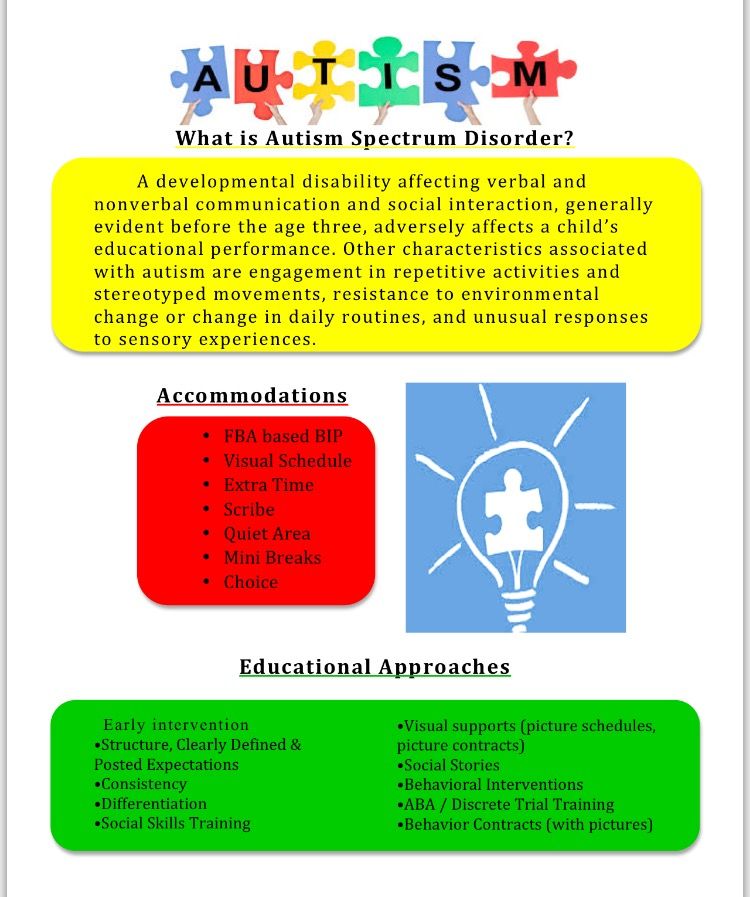 Learn about…
Learn about…READ MORE
What’s the Link Between Autism and Oral Fixation?
Medically reviewed by Nicole Washington, DO, MPH
Autism and oral fixation are linked through sensory processing disorders. Oral fixation involves repetitive chewing behaviors used as a self-soothing…
READ MORE
What Is The Purpose of a Communication Board for Autistic Children?
Communication boards can be helpful for anyone nonverbal or with undeveloped speech skills.
READ MORE
BPD and Autism: Similarities and Differences
Autism and BPD may be mistaken for each other as both can feature an imbalance in the types of cognitive empathy and relationship difficulties.
READ MORE
Are Autistic Kids More Prone to Motion Sickness?
Medically reviewed by Carissa Stephens, RN, CCRN, CPN
Many autistic kids have trouble with motion sickness.
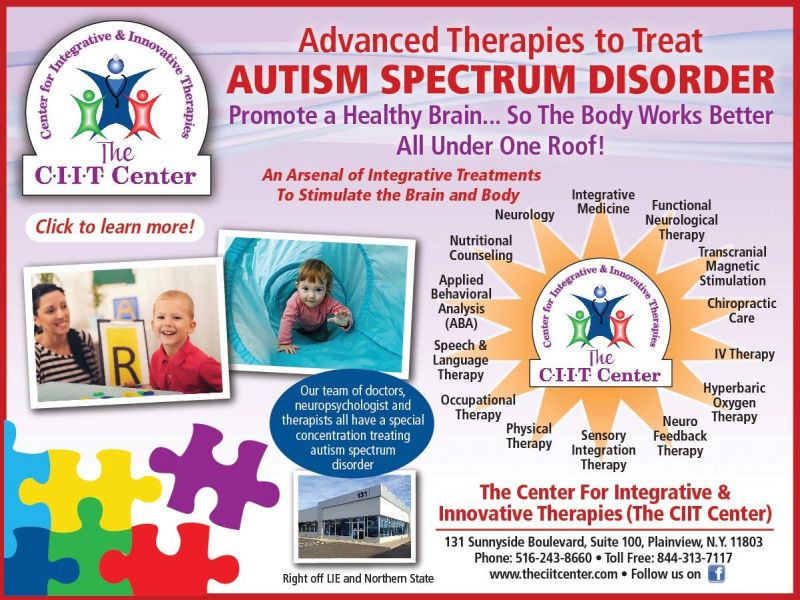 We look at the link between autism and travel sickness, plus coping tips.
We look at the link between autism and travel sickness, plus coping tips. READ MORE
The Link Between Autism and Sound Sensitivity (Hyperacusis)
Medically reviewed by Karin Gepp, PsyD
Sound sensitivity is a common sensory issue in autism. Coping methods, like wearing headphones, can help you deal with the discomfort.
READ MORE
A diagnostic test that allows you to independently track the dynamics of a child's development - NGO of assistance to children with ASD "Contact"
ATEC Autism Test to assess progress and identify problems
TheAutism Test, ATEK, is used to assess progress in children with autism. Scoring is automatic.
I. Speech/Language/Communication Skills
| 1. Knows own name: YesSometimesNo | 2.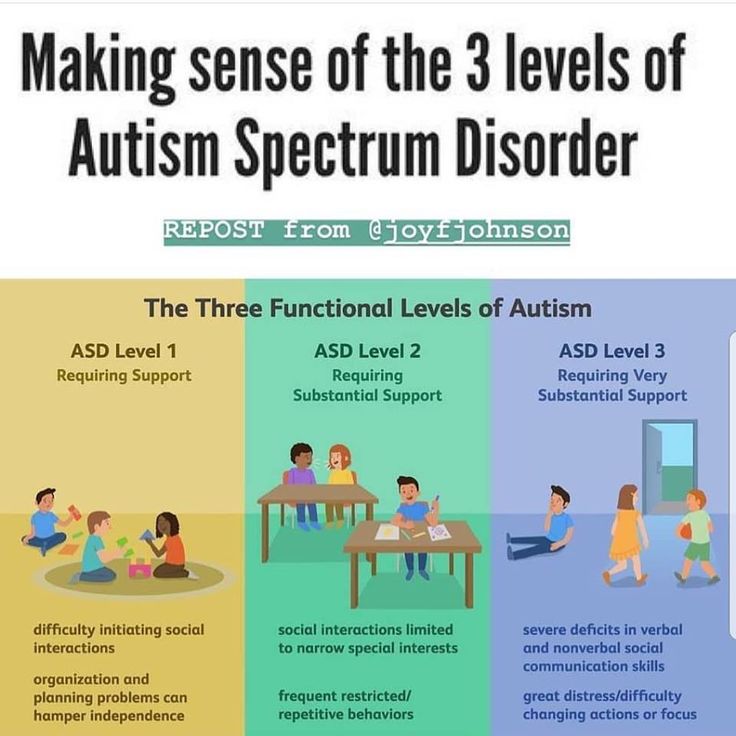 Responds to 'no' or 'stop': YesSometimesNo Responds to 'no' or 'stop': YesSometimesNo |
| 3. Can execute some commands: YesSometimesNo | 4. Can say one word: YesSometimesNo |
| 5. Can say 2 words in a row: YesSometimesNo | 6. Can say 3 words in a row: YesSometimesNo |
| 7. Knows 10 or more words: YesSometimesNo | 8. Uses sentences of 4 or more words in speech: YesSometimesNo |
| 9. Explains what he/she wants: YesSometimesNo | 10. Asks meaningful questions: YesSometimesNo |
| 11. Speech is most often meaningful/logical: YesSometimesNo | 12. Often uses sentences arranged in a logical sequence: YesSometimesNo |
| 13. Maintains a conversation: YesSometimesNo | 14. Has normal communication skills for her age: YesSometimesNo |
II. Socialization
1.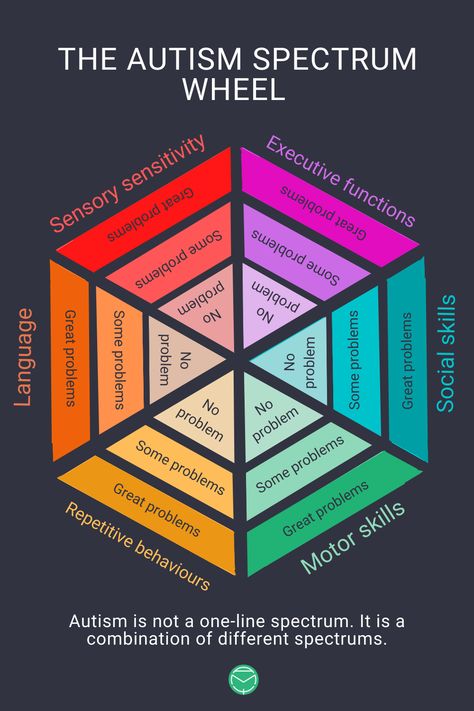 Seems to be in a shell - you can't reach him/her: YesSometimesNo Seems to be in a shell - you can't reach him/her: YesSometimesNo | 2. Ignores other people: YesSometimesNo |
| 3. Doesn't pay much attention when he/she is spoken to: YesSometimesNo | 4. Not willing to work together: YesSometimesNo |
| 5. No eye contact: YesSometimesNo | 6. Prefers to be alone: YesSometimesNo |
| 7. Shows no affection: YesSometimesNo | 8. Doesn't greet parents: YesSometimesNo |
| 9. Avoids contact with others: YesSometimesNo | 10. No simulation: YesSometimesNo |
| 11. Dislikes touching/hugs: YesSometimesNo | 12. Not divided, no pointing gesture: YesSometimesNo |
| 13. Does not wave goodbye: YesSometimesNo | 14. Naughty/Naughty: YesSometimesNo |
| 15. Has fits of anger, irritability: YesSometimesNo | 16. Lack of friends/no company: YesSometimesNo |
17.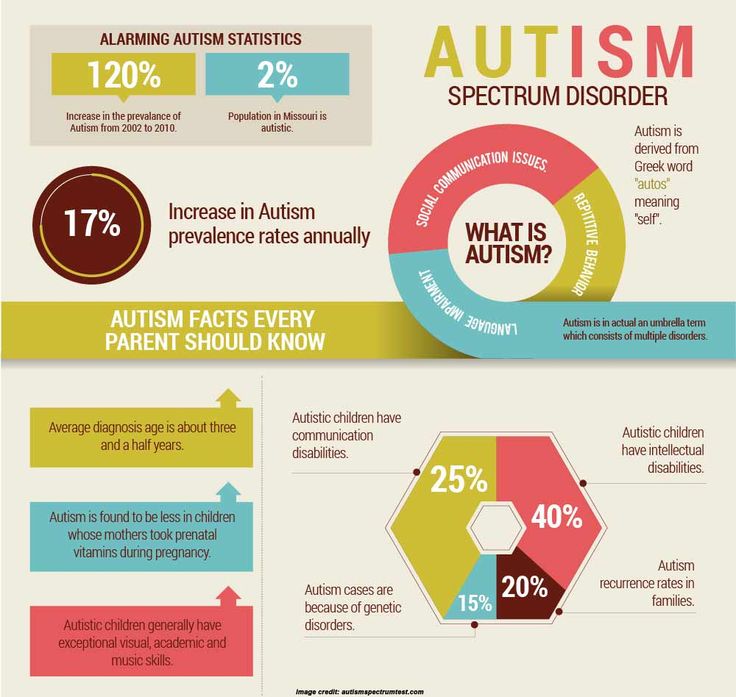 Rarely smiles: YesSometimesNo Rarely smiles: YesSometimesNo | 18. Doesn't understand other people's feelings: YesSometimesNo |
| 19. Indifferent if sympathy is expressed to him: YesSometimesNo | 20. Does not respond to parental care: YesSometimesNo |
III. Sensory skills/Cognitive abilities
| 1. Responds to own name: YesSometimesNo | 2. Responds to praise: YesSometimesNo |
| 3. Looks at people and animals: YesSometimesNo | 4. Looks at pictures (and TV): YesSometimesNo |
| 5. Can draw, paint, craft: YesSometimesNo | 6. Plays with toys correctly: YesSometimesNo |
| 7. Facial expression appropriate to the situation: YesSometimesNo | 8. Understands what is happening on the TV screen: YesSometimesNo |
| 9. Understands explanations: YesSometimesNo | 10.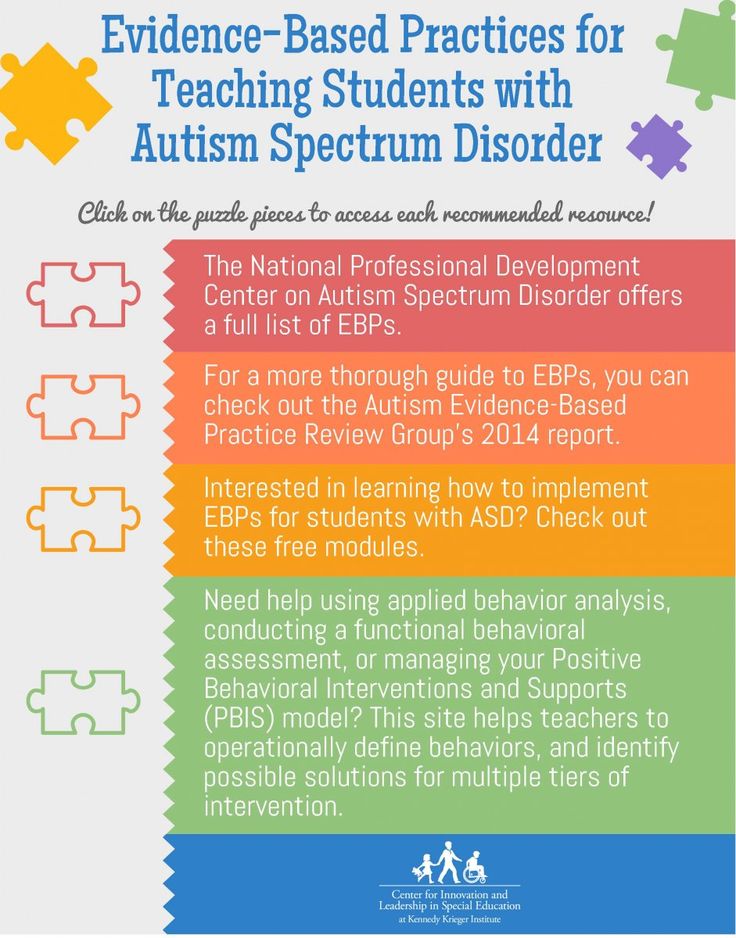 Is aware of the environment: YesSometimesNo Is aware of the environment: YesSometimesNo |
| 11. Recognizes danger: YesSometimesNo | 12. Shows imagination: YesSometimesNo |
| 13. Shows initiative: YesSometimesNo | 14. Knows how to dress himself: YesSometimesNo |
| 15. Shows curiosity, interest: YesSometimesNo | 16. Courageous - explores surroundings: YesSometimesNo |
| 17. Adequately perceives the environment, does not withdraw into himself: YesSometimesNo | 18. Looks where others are looking: YesSometimesNo |
IV. Health / Growth / Behavior
| 1. Bedwetting: Not a problem Mild problem Medium problem Serious problem | 2. Peeing in pants/diapers: No problem Mild problem Medium problem Serious problem |
| 3. Pooping in pants/diapers: No problem Mild problem Medium problem Serious problem | 4.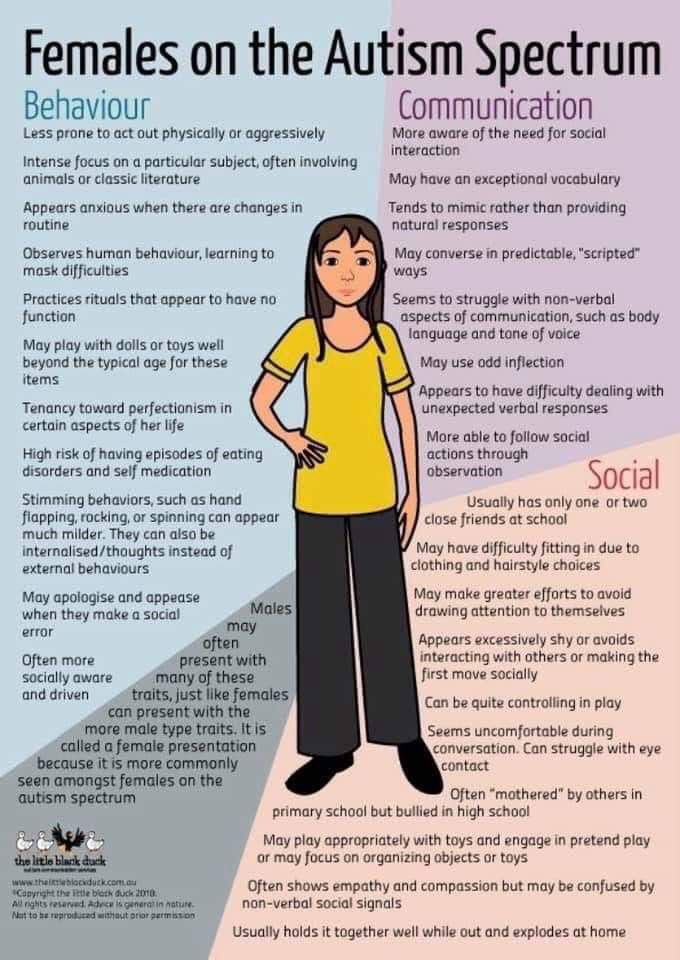 Diarrhea: Not a problem Mild problem Medium problem Serious problem Diarrhea: Not a problem Mild problem Medium problem Serious problem |
| 5. Constipation: Not a problem Mild problem Medium problem Serious problem | 6. Sleep problems: Not a problem Mild problem Medium problem Serious problem |
| 7. Eating too much/too little: Not a problem Mild problem Medium problem Serious problem | 8. Eats a very limited set of foods: No problem Mild problem Medium problem Serious problem |
| 9. Hyperactivity: Not a problem Mild problem Medium problem Serious problem | 10. Apathy: No problem Mild problem Medium problem Serious problem |
| 11. Hits or injures himself: No problem Minor problem Medium problem Serious problem | 12. Hitting or injuring others: No problem Minor problem Medium problem Serious problem |
| 13. Breaks and throws everything around: No problem Minor problem Medium problem Serious problem | 14. Sound Sensitivity: No Problem Mild Problem Moderate Problem Serious Problem |
15.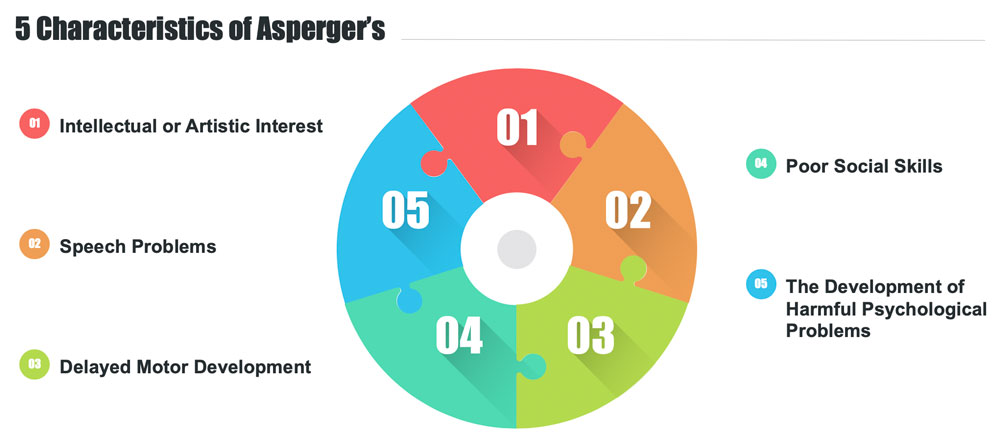 Anxiety/fear: Not a problem Mild problem Medium problem Serious problem Anxiety/fear: Not a problem Mild problem Medium problem Serious problem | 16. Depression/tears: No problem Mild problem Medium problem Serious problem |
| 17. Seizures: No problem Mild problem Medium problem Serious problem | 18. Obsessive Speech: Not a Problem Mild Problem Medium Problem Serious Problem |
| 19. Same procedure: No problem Mild problem Medium problem Serious problem | 20. Screams and Shouts: No Problem Minor Problem Medium Problem Serious Problem |
| 21. Need for uniformity: Not a problem Mild problem Medium problem Serious problem | 22. Persistent agitation: No problem Mild problem Medium problem Serious problem |
| 23. Insensitivity to pain: No problem Mild problem Medium problem Serious problem | 24. Concentration on certain subjects/topics: Not a problem Mild problem Medium problem Serious problem |
| 25. Repetitive movements: Not a problem Mild problem Medium problem Serious problem |
Outcome scale:
- 10-15 non autistic child, completely normal, well developed child
- 16-30 non-autistic child, slight developmental delay
- 31-40 mild or moderate autism
- 41-60 moderate autism
- 61 and above severe autism
The ATEC test is not a diagnostic test, but serves to evaluate progress. The test is not intended to confirm the presence of autism, for an accurate diagnosis, you must contact a specialist.
The test is not intended to confirm the presence of autism, for an accurate diagnosis, you must contact a specialist.
Signs of autism in adolescents. Symptoms and causes at 12-17 years old.
Signs of autism in adolescents. Symptoms and causes at 12-17 years old. Gimranov Rinat Fazylzhanovich
Neurologist, neurophysiologist, experience - 33 years;
Professor of Neurology, MD;
Clinic for Rehabilitation Neurology. About the author
Publication date: November 10, 2020
Updated: March 3, 2023
Autism has been a common phenomenon in recent decades. More and more children are born with this type of mental disorder. The main feature of patients: problems in the field of social interaction.
Article content:
- 1 Causes of development
- 2 Signs of the disease
- 3 Behavior patterns
- 4 Treatment and socialization in society
- 5 References
Causes of development
Boys and girls with autistic personality disorder perceive the world from their own point of view.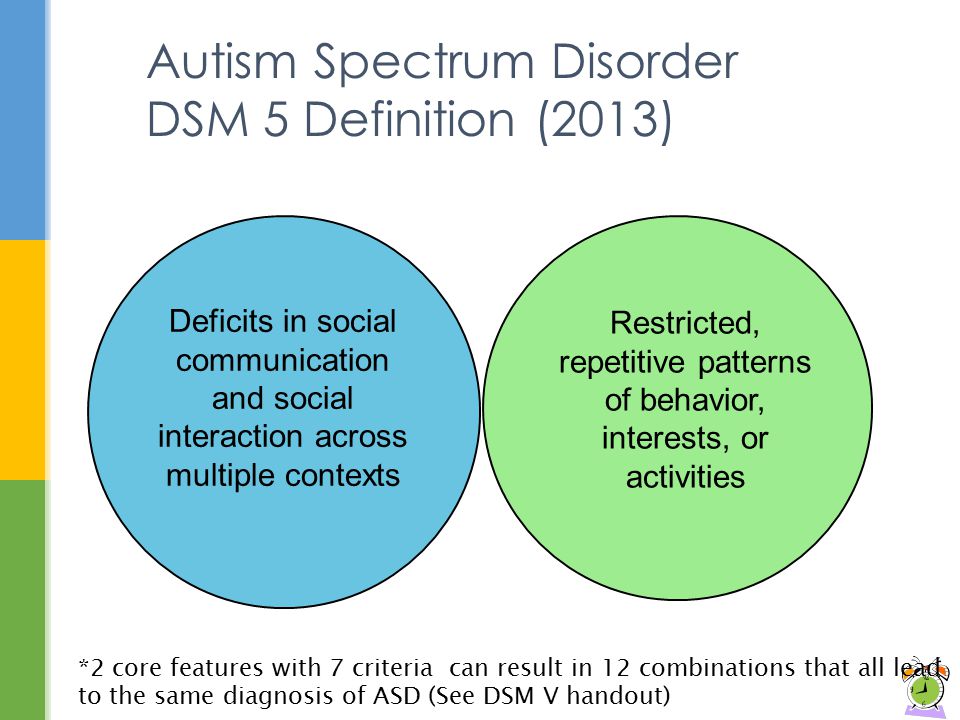 They do not feel the need to communicate with peers and adults, family members (brothers, sisters) [1]. For this reason, it is difficult for them to understand others and integrate into society. Special difficulties arise in atypical autism.
They do not feel the need to communicate with peers and adults, family members (brothers, sisters) [1]. For this reason, it is difficult for them to understand others and integrate into society. Special difficulties arise in atypical autism.
Doctors still cannot reliably establish the causes of symptoms and signs of autism in children and adolescents. Since the disease is not an organic pathology or a defect in the structure of the brain.
- Genetic predisposition inherited from one of the ancestors, close relatives of the older generation.
- Infectious and viral diseases transmitted by the mother during pregnancy.
- Problematic pregnancy: during and / or before childbirth - an episode of hypoxia.
- Obesity and serious metabolic disorders in the mother before childbirth and during childbearing.
- Pathology of gestation, fetal malnutrition, premature birth.
As a rule, signs of autism appear in adolescence against the background of hormonal changes and increased social workload.
In some patients, changes in behavior appear as if suddenly, acutely. Therefore, parents think that the child got sick right now, in adolescence. But this is not so: the disorder simply did not manifest itself [2]. Since the world around such children was built comfortably, without irritating factors, risk factors for the development of autism were eliminated.
Symptoms of the disease
Depending on the specific form of the disease, a variety of symptoms may appear. But adolescent autism also has permanent signs that are characteristic of most people with the syndrome:
- Tendency to be alone. Underdevelopment of social ties. Such children do not have permanent friends with whom they would strive to communicate beyond the mandatory minimum.
- A feeling of emotional overload that occurs when communicating with other people even for a short time.
- Hypersensitivity. Because of which children with autistic disorders are annoyed by loud noises, bright lights.

- Lag in social development. It is difficult for them to respond correctly to social stimuli, to perceive accepted patterns of behavior. They do not understand the signals sent to them.
- The parts of the brain responsible for emotional manifestations are not developed, so the facial expressions of such children are often poor and do not coincide with those characteristic of age. Their behavior is very different from their peers.
- Puberty is perceived extremely hard [3]. At this time, manifestation of unmotivated aggression, panic attacks, severe depressive states, even epileptic seizures are possible.
Depending on the severity of the syndrome or personality characteristics, signs of autism in adolescent children may peak at 12 or 16-17 years of age. However, during the transition to an older age, with proper correction and treatment, they gradually smooth out, a person learns to adapt to society.
Behaviors
Adolescents with autism tend to choose one of the standard behaviors.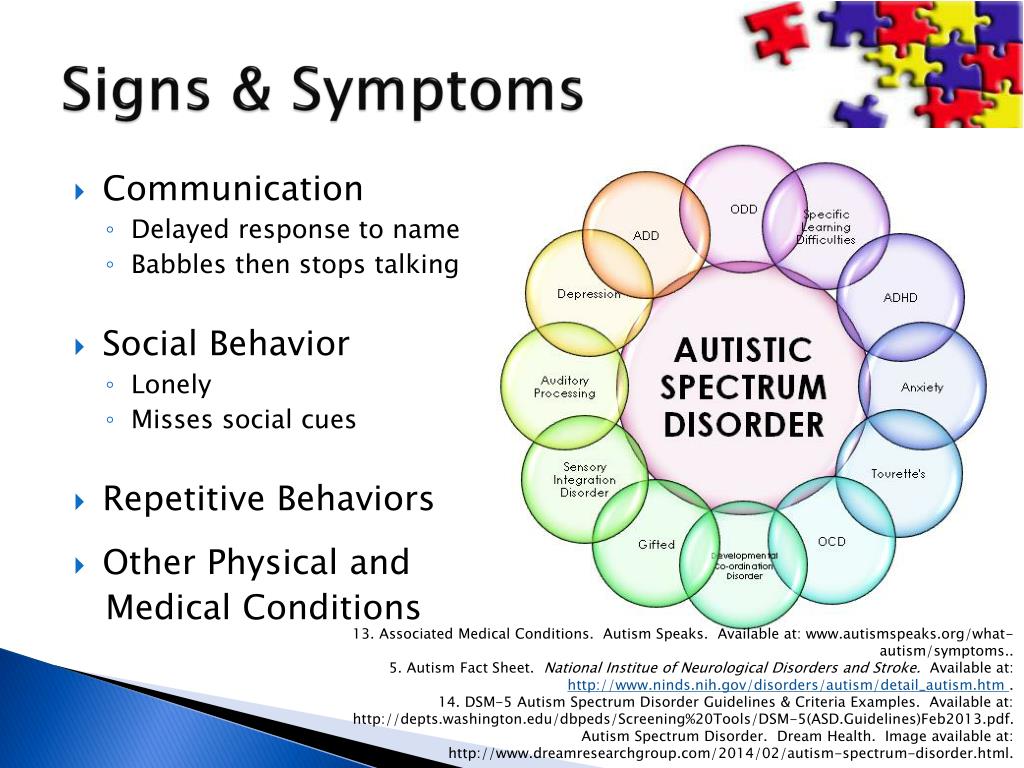 The communication template depends on the characteristics of the manifestation of the syndrome in them, the results of corrective work.
The communication template depends on the characteristics of the manifestation of the syndrome in them, the results of corrective work.
- Peer withdrawal is the most common option. The child does not understand why constantly interact with people and avoids unnecessary communication. These guys sometimes do not have a very well developed speech or they do not like to use it. Sometimes there is a slight lag in cognitive activity. For communication, they prefer gestural communication. These are classic low-emotional quiet people who do not join teenage groups of interests, keeping aloof.
- Hyperactivity is another type of behavior. Lacking an accurate understanding of the rules of conduct and limits, adolescents tend to over-express themselves. Under the influence of hormonal changes, they are aggressive, they are easy to piss off [4]. They do not tolerate changes in the usual routine, fall into fits of rage due to minor events for other events.
- In a severe form of the disease, there is a noticeable lag in the development of speech, signs of mild uo (mental retardation) may occur.
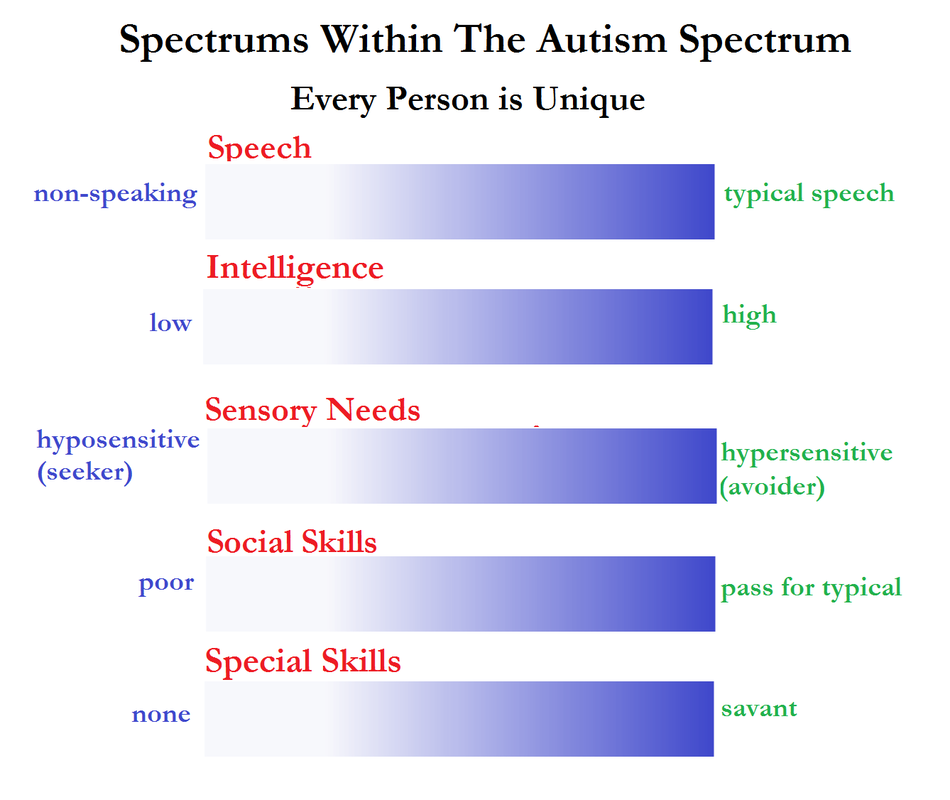 In situations that make a teenager worry, unconscious movements appear: waving arms and legs, fingering, marking time.
In situations that make a teenager worry, unconscious movements appear: waving arms and legs, fingering, marking time.
The children themselves do not realize that they are special. Such patients should be brought to the neurologist by parents and close people. Those who have behavioral deviations from the outside.
Treatment and socialization in the community
If a teenager's symptoms of autism have increased by the age of 12 or 16-17, you need to seek help from specialists. At the same time, it should be understood that autistic disorder is not a sentence.
You can learn to live with the peculiarities of behavior, integrate into social life, adjust to the generally accepted laws of society. The main thing is to understand that the child needs help and patience in order to learn what others perceive intuitively.
You need to understand that the absence of friends, additional communication is not always the desire and voluntary choice of such a child.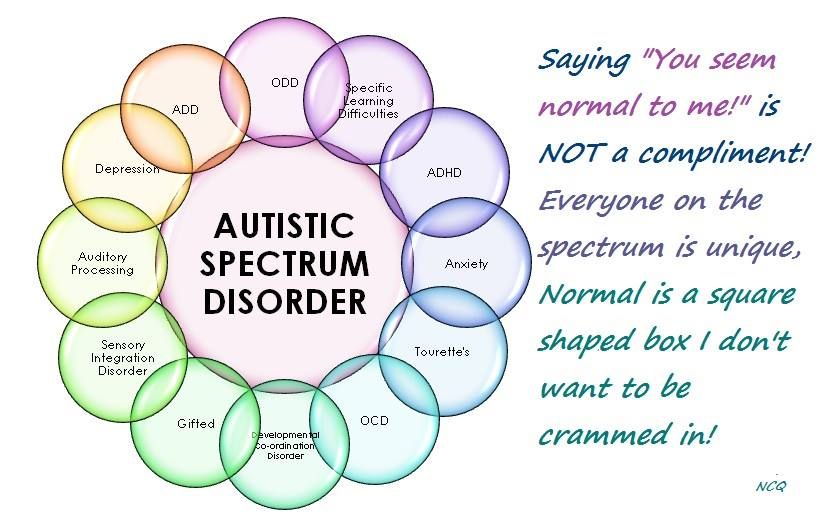 Many of them want to have a company, but do not know how to create such a relationship, they cannot find people who are ready to accept their characteristics. Or they are not ready to devote too much time to communication due to the emotional overload from this process.
Many of them want to have a company, but do not know how to create such a relationship, they cannot find people who are ready to accept their characteristics. Or they are not ready to devote too much time to communication due to the emotional overload from this process.
It is necessary to treat and socialize autists. So, there are a lot of examples that such adults achieve success in life.
For treatment, they turn to clinics, where children undergo special tests by a pediatric neurologist. Then, with the joint efforts of doctors of various profiles, a correction program is developed for them, which includes:
- work with a psychologist;
- special classes teaching interaction with society;
- taking medications that suppress the negative symptoms of the disease, correcting behavior;
- work with speech therapists to eliminate problems with the development of speech.
References
Was this article helpful?
You can subscribe to our newsletter and learn a lot of interesting things about the treatment of the disease, scientific achievements and innovative solutions:
Your e-mail
I agree with the privacy policy and the processing of personal data
Please leave this field empty.